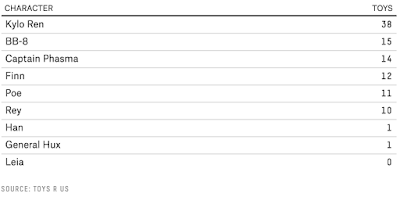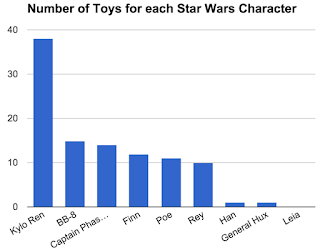 It's the beginning of the school year now and the dust is starting to settle from the summer's obsession with Pokemon Go. So why not try to leverage that obsession by having students collect some data. The data comes in the form of how many times each Pokemon was seen and caught by each user. I got the idea for this set of data from this post from @lesliefarooq where she pointed out that with each Pokemon caught, when you look in the Pokedex, there is data about how many times each Pokemon was both seen and caught. At first glance this is a simple data set but it turns out there is a lot you could do with it.
It's the beginning of the school year now and the dust is starting to settle from the summer's obsession with Pokemon Go. So why not try to leverage that obsession by having students collect some data. The data comes in the form of how many times each Pokemon was seen and caught by each user. I got the idea for this set of data from this post from @lesliefarooq where she pointed out that with each Pokemon caught, when you look in the Pokedex, there is data about how many times each Pokemon was both seen and caught. At first glance this is a simple data set but it turns out there is a lot you could do with it.So what I was able to do was start to collect some of that data by using a Google Form to generate two types of graphs. The first was a graph of the most often seen Pokemon (no surprise to players what the top three were). The second graph was the linear relationship between the number of caught and the number seen. What follows are the ways that you can either use my data or collect your own with your students.
Analysis
So the first thing you need to do is get the data. Once in the game, tap on the Pokeball at the bottom of the screen, then the Pokedex and then tap on any Pokemon that shows up. Once you get to the Pokemon screen you can collect the Pokemon number, the name is optional (to make entry into the form quicker, I only required the number), how many they saw, how many they caught and finally the type of Pokemon. Here you will get the data on each Pokemon. Swiping left or right will cycle between each Pokemon so you can collect the data faster. So if you have students that have been playing the game, they can collect the data there. You might want them to collect it manually or they can use this form to add to my data electronically or you can make a copy of this form to create your own class set.
Once you have the data, the first thing that you can have students do is create a bar graph of their most popular Pokemon like @lesliefarooq did. What I did is took that a step further. Since I collected the data via a Google form, I used a bit of spreadsheet wizardry to tally up the total number of Pokemon of each type seen given all the data. You can see that in my data sheet where I have added some columns to the right where the data is collected. The nice thing about this is that as more people add their data to my form, it will continue to update the totals. So with this data you can do some of the same thing that @lesliefarooq did and ask students about their most popular Pokemon and compare to the graphic that shows how popular or rare each Pokemon is.
But the nice thing about this data is that you can now use the connection between the sightings and catches to connect to linear relationships. It's not a perfectly linear relationship but it will have a very strong correlation.
 NOTE: In the actual game, players will collect Pokemon in two ways. The main way is by having them appear and then catching them by throwing Pokeballs at them. Most Pokemon will be caught this way. The second way is to hatch eggs. And the only way to hatch an egg is to physically walk 2km, 5km or 10km (that is one of the physical activities that the game promotes). When you hatch an egg, they are often more rare Pokemon that you will never see "in the wild". So these will always be seen once and caught once. This means that if you do any linear regression, you will have a large number of data that will be (1, 1) and that will skew your regression making it stronger. So I suggest removing any of those data pieces. In the set that I give as a sample, I have already done that (see below).
NOTE: In the actual game, players will collect Pokemon in two ways. The main way is by having them appear and then catching them by throwing Pokeballs at them. Most Pokemon will be caught this way. The second way is to hatch eggs. And the only way to hatch an egg is to physically walk 2km, 5km or 10km (that is one of the physical activities that the game promotes). When you hatch an egg, they are often more rare Pokemon that you will never see "in the wild". So these will always be seen once and caught once. This means that if you do any linear regression, you will have a large number of data that will be (1, 1) and that will skew your regression making it stronger. So I suggest removing any of those data pieces. In the set that I give as a sample, I have already done that (see below). So this data set will be good for introductory linear relations with interpolation and extrapolation but what I have also done is extract some of the data into smaller sets. Because when we collected the data we also asked about the Pokemon number and Pokemon type. So this means we can start to use that info. For example, we can break up the big set into smaller sets, each corresponding to a different Pokemon. To facilitate that, I have created both a Fathom file and a Desmos Activity with these smaller sets (try it out here). The Desmos file, as it is set up, would be good for beginners when it comes to interpolation and extrapolation but it could be augmented for further exploration of lines of best fit. The Fathom file would be good for comparison of lines of best fit for the data sets. In the original data set you can also do things comparing the types of Pokemon as well.
So this data set will be good for introductory linear relations with interpolation and extrapolation but what I have also done is extract some of the data into smaller sets. Because when we collected the data we also asked about the Pokemon number and Pokemon type. So this means we can start to use that info. For example, we can break up the big set into smaller sets, each corresponding to a different Pokemon. To facilitate that, I have created both a Fathom file and a Desmos Activity with these smaller sets (try it out here). The Desmos file, as it is set up, would be good for beginners when it comes to interpolation and extrapolation but it could be augmented for further exploration of lines of best fit. The Fathom file would be good for comparison of lines of best fit for the data sets. In the original data set you can also do things comparing the types of Pokemon as well.Sample Questions
- How does your top 20 most popular Pokemon compare to the top 20 of the larger set?
- How does the number of each type of Pokemon compare to each other?
- Which Pokemon has the highest number of average catches?
- Which Pokemon is easier to catch, based on the data?
- How does the linearity of the data relate to how easy the Pokemon could be caught?
- Which type of Pokemon is easier to catch? Which one has the largest correlation?
Download the Data
- Form to add to this data set. Google sheet with the large data set, comparison of the Pokemon caught (on the second tab)
- Form to create your own data set (make a copy)
- Fathom File with large data set and with a few graphs
- CODAP large data set
- Desmos Activity
- Original post
- Pokemon popularity data
Let me know if you used this data set or if you have suggestions of what to do with it beyond this.





































